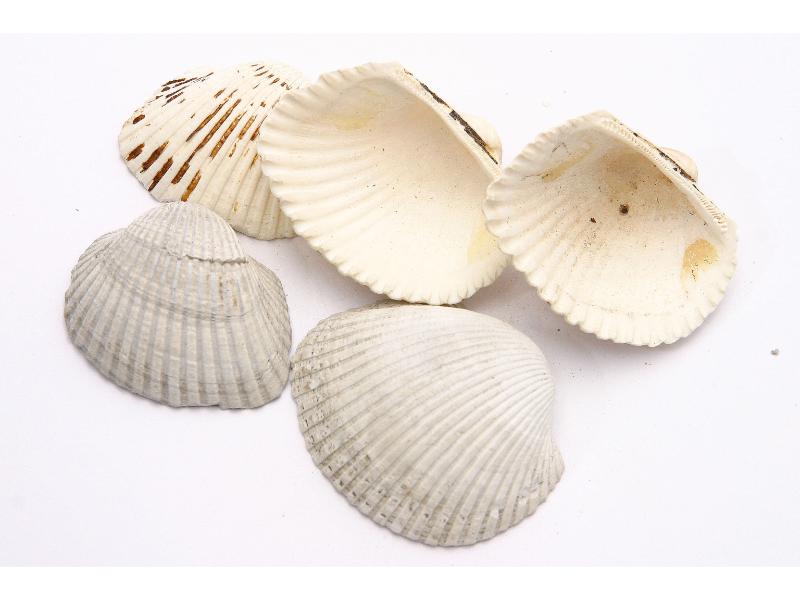Search in medicinals
Arcae Concha
Ark shell
瓦楞子 〔瓦楞子〕 wǎ léng zǐ

Alternate Chinese names: 蚶壳 hān ké; 瓦垄子 wǎ lǒng zǐ; 蚶子壳 hān zǐ ké; 魁蛤壳 kuí gé ké; 花蚬壳 huā xiàn ké; 瓦垄蛤皮 wǎ lǒng gé pí; 血蛤皮 xuè gé pí
Kingdom: Plant
Origin in PRC Pharmacopoeia: Arca subcrenata Lischke; Arca granosa Linnaeus; Arca Inflata Reeve (PRC Pharmacopoeia)
Origin in unofficial sources: Arca inflata Reeve*; Arca granosa L.*; Arca subcrenata Lischke*
Use: Medicinal
Category: Phlegm-transforming cough-relieving panting-calming agents / Phlegm-transforming agents
Properties: Salty; balanced.
Channel entry: Lung, stomach, and liver channels.
Actions and indications:
- Disperses phlegm and soften hardness: Scrofula and goiter.
- Transforms stasis and disperses binds: Concretions, conglomerations, and glomus.
- Additional uses: Calcined wǎ léng zǐ controls acidity and relieves pain. It is used to treat stomach pain with vomiting of acid. For this it can be combined with Hǎi piāo xiāo (海螵蛸 Sepiae Endoconcha, cuttlefish bone) and Chén pí (陈皮 Citri Reticulatae Pericarpium, tangerine peel), and then ground to powder. This has come to be the main of use of wǎ léng zǐ in modern practice.
- Modern applications: In recent years, wǎ léng zǐ has been used to treat hepatosplenomegaly and tumors of the digestive tract.
Dosage and method: Oral: 9–15g in decoctions (boil for a long time); or use in pills and powders. Topical: Grind and apply mixed.
Product description: A shell consisting of two fan-shaped or triangular valves, both the same, or one larger than the other. They are about 2.5–8 cm long and 2–6 cm wide. They bulge outward, and on the outer surface are ten lines of tile-like protuberances, grayish-brown alternating with white. The lines radiate from apex outwards, giving the edge a crenelated shape. The valves are smooth and white on the inside. They are hard in substance, and when broken reveal a white rupture surface.
Quality: Clean neatly shaped shells without trace of flesh and without sand are the best.
Production area: Guǎngdōng, Jiāngsū, Shāndōng.
Etymology: The name wǎ léng zǐ 瓦楞子, literally tile ridges
or rows of tiles,
reflects the similarity of the shell's exterior surface to a tiled roof.
See: Wǎ léng zǐ (瓦楞子 Arcae Concha, ark shell)
Back to search result Previous Next